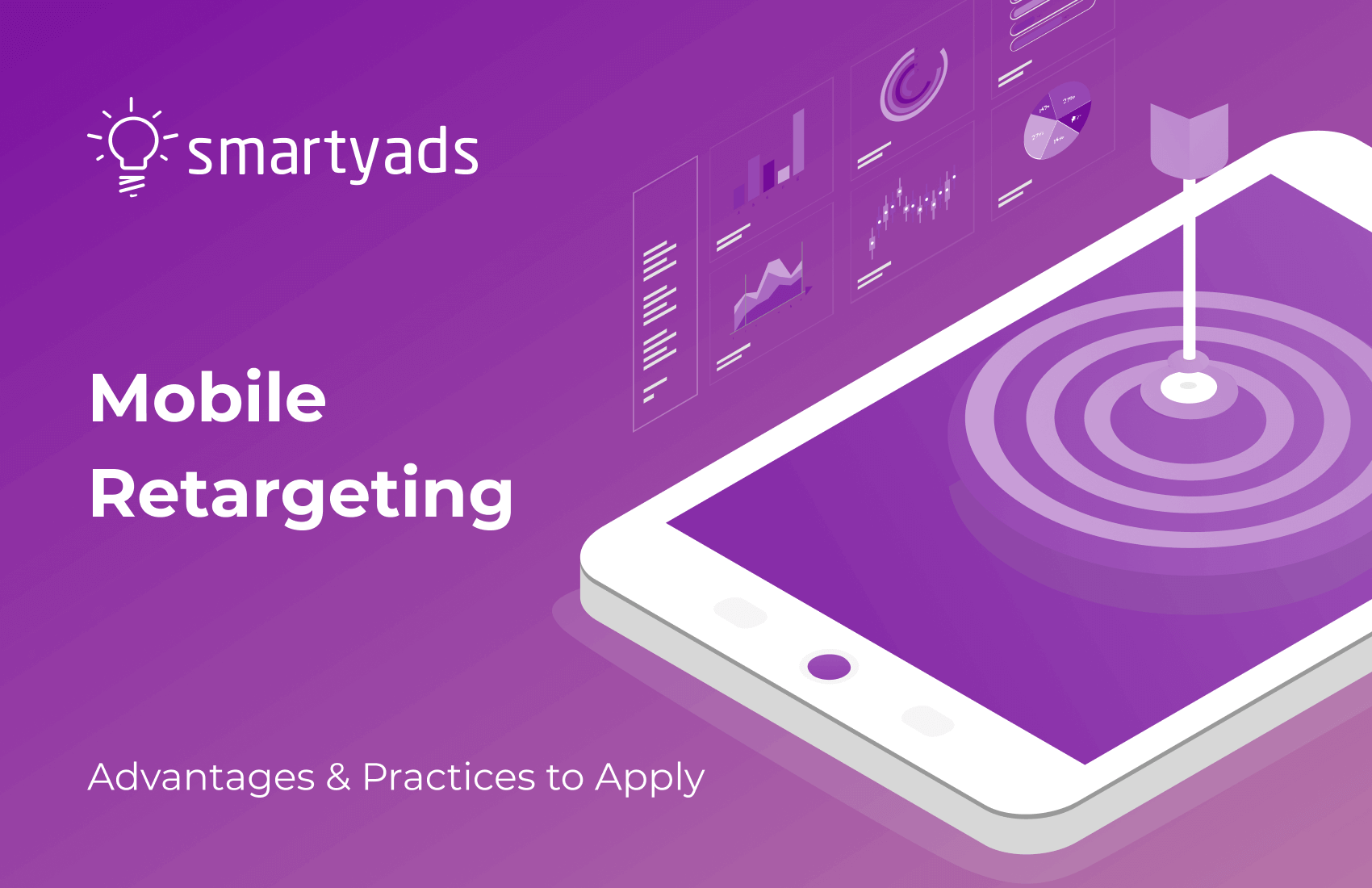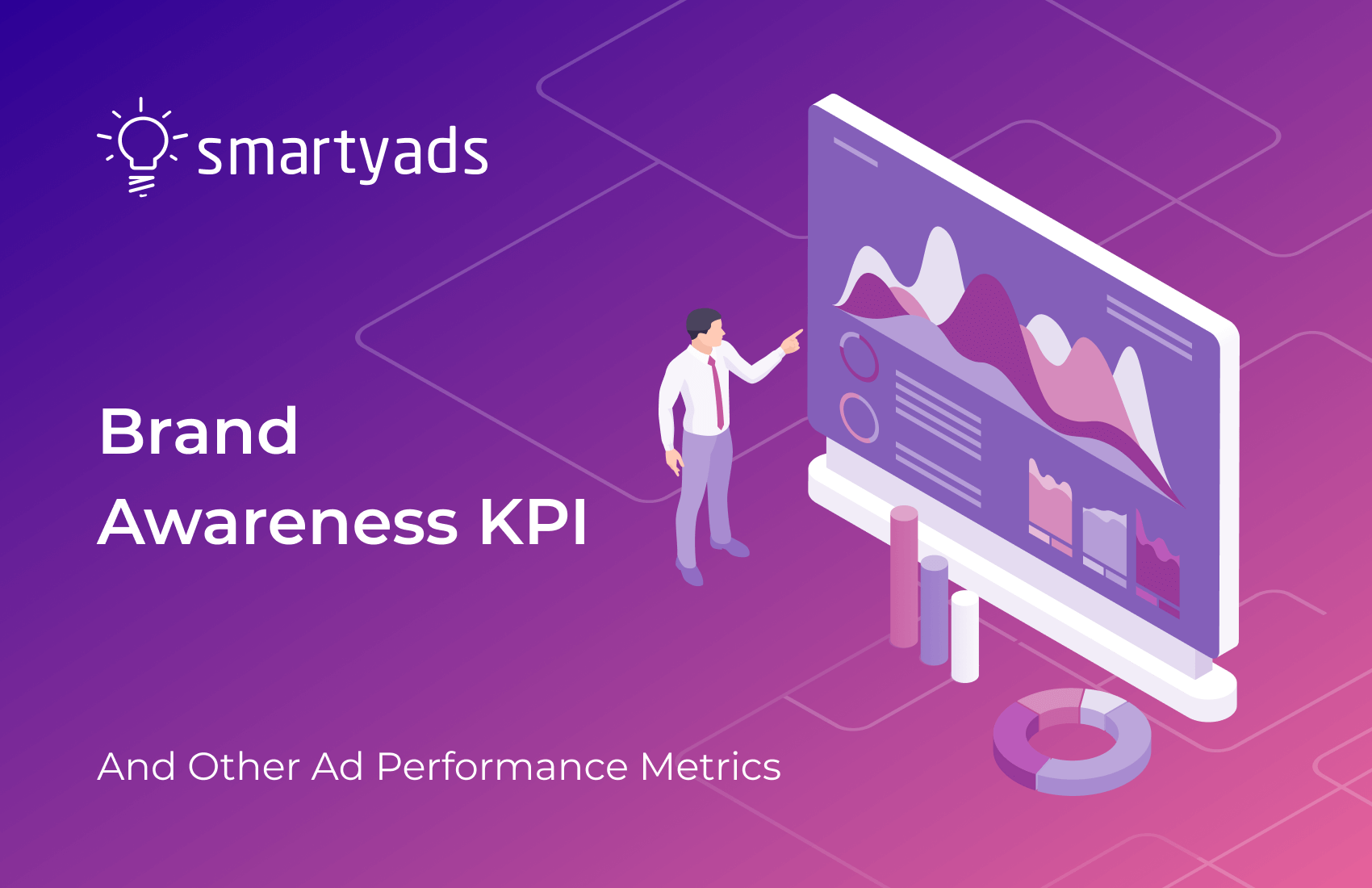Mobile retargeting has emerged as a key advertising strategy focused on re-engaging individuals who have previously shown interest in your website or mobile application. As a potent tool in performance marketing, it offers a golden opportunity to reclaim potential clients and boost your brand's visibility.
Mobile app retargeting has proven indispensable for brands aiming to captivate online audiences, especially those whose primary advertising channels are saturated. The shift towards mobile advertising comes into sharper focus when we consider its unique advantages over desktop retargeting campaigns. It’s time to find out how to achieve the best results for your mobile campaigns while leveraging those audiences who could be potentially most interested in your products or services.

What is mobile retargeting?
Mobile retargeting is a digital marketing strategy aiming to reach Android and iOS users who have previously engaged with your mobile app or website. By using customized ads, businesses can reconnect with users across different apps or mobile web platforms, reminding them of products or services they are interested in. This approach helps increase brand visibility, drive conversions, and recapture lost leads by delivering personalized, relevant ads to users on Android and iOS devices who are more likely to purchase.
How does mobile retargeting work?
In-app retargeting is based on "deep links" technology. Usually, a deep link immediately opens a mobile application when the user clicks on it. It can lead to either the application's main screen or any other specific screen inside the application.
In-app mobile retargeting allows you to implement the following scenario: the user surfs on the Internet, clicks on the link that interests him or her, and then gets right away to the chosen window in the app. A direct link from your browser to the mobile app!
In order for mobile app retargeting to work, the application must have a URL scheme configured properly for specific links. For instance, the Instagram profile link opens the profile screen in the Instagram application. Another example is sales or benefits for app users – once they click on the link, they should get to the right page of the application, not just the main page, which may be confusing.
At the same time, if the user doesn’t have an app installed on their phone yet, they should be redirected to the App Store or Play Store and then get to the right page after the installation. Although these details should be carefully managed, deep links can provide a great user experience if used correctly.

Benefits of Mobile Retargeting
Reaching the Right Audience
Mobile retargeting marketing allows your ads to reach users who have previously engaged with your brand, helping you better connect with potential customers who are more inclined to make a purchase.
Increased Conversion Rates
Mobile retargeting focuses on reaching users who are already familiar with your products or services, aiming to boost conversion rates by delivering highly relevant ads.
Enhanced Brand Visibility
Repeatedly exposing your ads across different mobile platforms helps to increase brand recognition and ensures that your business stays at the forefront of potential customers' minds.
Better Ad Personalization
Mobile retargeting ads enables personalized ad campaigns, ensuring that users see content tailored to their preferences, thereby improving engagement.
Improved Return on Investment (ROI)
Focusing on users who have previously expressed interest helps make ad spending more efficient, leading to a better return on investment for marketing endeavors.
8 Best practices for mobile app retargeting
The idea of retargeting mobile ads is not new – it has been used by many brands for quite some time already, and throughout this time, a number of best and worst practices for mobile retargeting have been defined. Here are some steps to follow in order to achieve the best results and make your campaign successful.
Define your goals
This first step is usually the most important one. The more precise your vision of the app retargeting campaign is, the more specific steps you’ll take, which is key to achieving the best results.
So, take some time to think about the main goals of your app retargeting campaign. Do you want to raise brand awareness? In this case, you should focus on emphasizing your brand, getting people to know about it, sparking their interest in visiting your app or website, and keeping it fresh in their minds.
If your primary goal is to get conversions, in contrast, your main audience is people who already know about your services. This requires a different strategy, so your campaign can get more targeted. At this stage, you should include links to specific services, suggest a free trial, or highlight the products a person was interested in.
Those details are important, so setting up your goals is key to defining your approach to mobile retargeting.
Know your audience and personalize
Another important thing about mobile app retargeting is getting to know your audience. Personalized offers served at the right time and on the right platform work much better than general ads.
It is crucial to understand your customers—get to know which platforms they use, what they are looking for, how they use your app, etc. All this information provides a great opportunity to offer personalized promotions. After you gather this data, you can lead people to specific links within your app and use a cross-channel approach to remind them about your products.
This practice has been widely used over the past few years and has already shown great results. For example, a recent study revealed that mobile app retargeting campaigns have an 18% advantage in retention compared to their broader counterparts.
These numbers prove that personalization is a great way to establish a solid relationship with your customers and ensure that your app won’t be abandoned. So don’t miss this opportunity to make the most of your app retargeting campaign—personalize.
Use audience segmentation
Once you know your goals and your customers, it is time to segment the audience and build retargeting scenarios for each group.
Mobile retargeting is suitable for almost any service where you can purchase travel, food, transport, e-commerce, games, lifestyle, dating, and many others. There are many scenarios and approaches for returning users to the mobile application and many ways to segment users.
Here are some examples of specific audience segments grouped by behavior:
- people who looked for goods but did not add anything to the basket;
- people who added goods to the basket but did not make a purchase;
- those who recently bought something and your goal here is to sell more;
- those who bought something earlier but then lost interest.
Now, let's have a look at the most popular user return scenarios:
- Provide a special offer, such as a discount on the next order or bundles of goods;
- Introduce new features in the application and inform of new ways to use the application.
- Show banners with products the user has already searched.
- Remind of forgotten goods in the basket and many others.
Users can also be segmented by time windows, such as how often you want them to see the ad or how much time passed since their last visit. It can depend on the type of product – those who shop for travel should be targeted sooner than those who are interested in luxury goods, for example.
Furthermore, it is also essential to re-engage new users after they install an app, as they tend to return more after this type of app retargeting. Finally, location and time zone are also significant details to consider when providing retargeting ads on mobile at the right time.
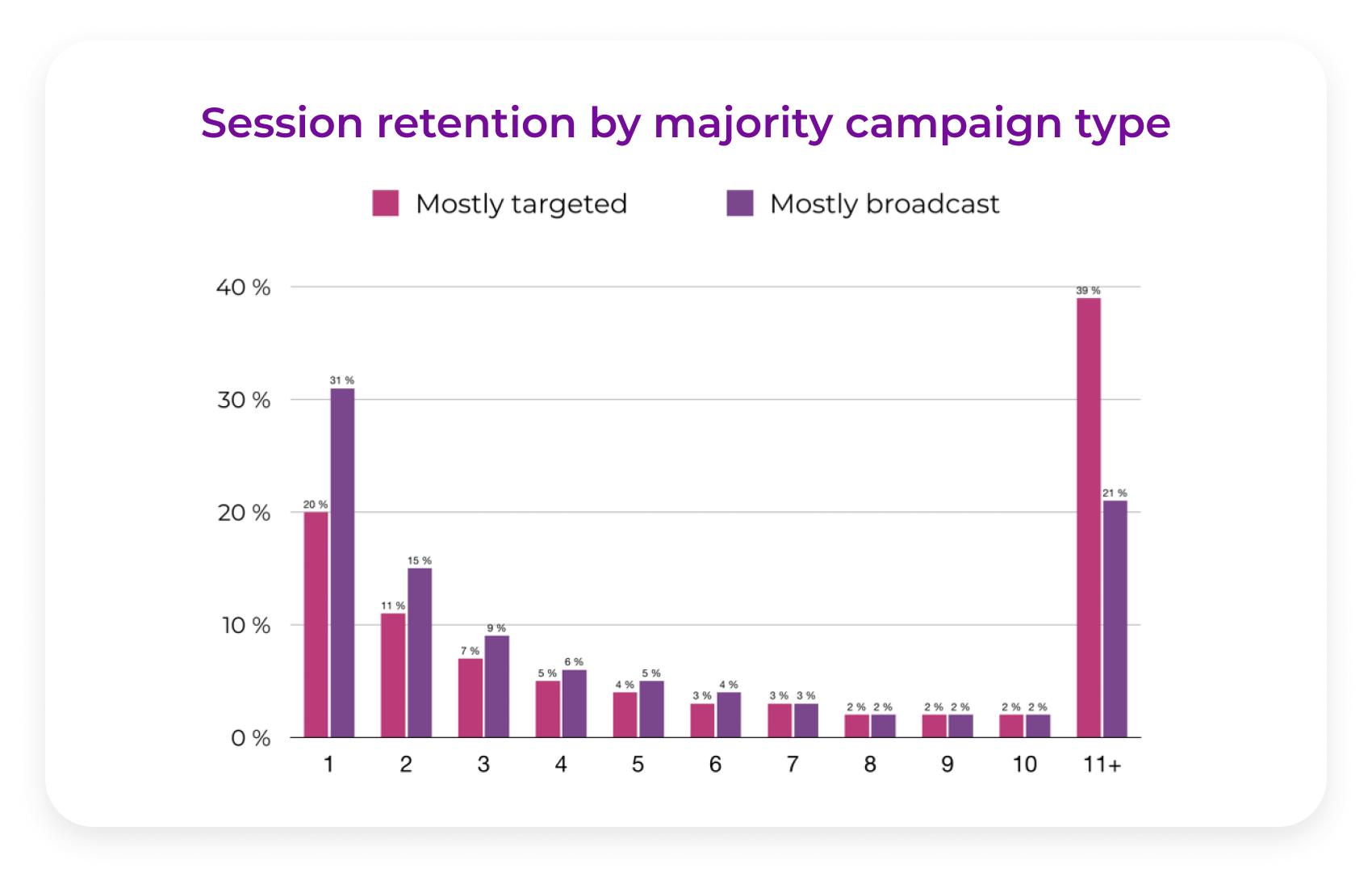
The success of any retargeting campaign lies in the correct audience segmentation, which largely depends on the topic and type of business. Therefore, before starting a campaign, select segments of your audience and work out the main return scenarios.
Use a frequency cap
Impression frequency is important for mobile retargeting campaigns. You should remind your users about your product repeatedly. The idea is tempting, but too many ads can annoy users, which may push your potential customers away.
Emarketer says over 77% of US digital buyers report seeing too many ads from the same retailers. At the same time, staying quiet for too long can result in people forgetting about your brand. Therefore, it is necessary to ensure your ads are delivered neither too often nor rarely.
It can be even more annoying for users to receive ads about something they have already purchased. To avoid that, use burn code to remove customers from retargeting lists once they have bought something or shift them to another list with a new mobile retargeting campaign.
Use highly-relevant techniques
There’s no better thing than location-based marketing campaigns when discussing mobile app retargeting. Why? Unlike personal computers, where users also consume advertising content, mobile gadgets are carried by people outside their homes, everywhere. This gives advertisers unprecedented opportunities to address their audiences in the most suitable places where the ad message can potentially cause better emotional responses.
For instance, if you are selling donuts, in this case, you can address a potential customer staying nearby with a timely ad offering fresh produce around breakfast time. All you need to do is configure the geolocation targeting on your ad platform, defining the suitable area around your shop. Plus, configure the right time when the message should reach potential customers.
However, the example above is the simplest example of leveraging this function. Knowing about your opportunities with modern ad solutions, you can decide what gadgets to send ads on and what geos to exclude. Most importantly, you can think of how to diversify your targeting approach with smart strategies, for instance, targeting your competitor’s venue, addressing thematically related venues, concerts, gigs, or certain parts of the region.
Measure results carefully
When discussing the campaign's success, numbers are essential to compare which creatives are the most effective. One should consistently measure retention, installs, and revenue to get those numbers.
Other values that might be particularly interesting for app retargeting are re-attributions (the number of people who re-installed the app) and re-engagement (the number of people who used an app after the campaign ended). These metrics can help you estimate which mobile app retargeting campaigns performed better and maximize return.
Don’t underestimate optimization
If you want to create a really robust advertising strategy of mobile retargeting, then constant optimization should always be on your agenda. If previously advertisers had to conduct it manually by constant monitoring and adjusting campaigns according to changes, now it has become much easier thanks to in-built optimization algorithms available on best DSPs that define programmatic buying.
Based on artificial intelligence and machine learning, these platforms automatically adjust campaign flow according to the best scenarios that lead to better performance (click-through rates, conversions, optimized costs, and more).
This way, for instance, SmartyAds developed a set of smart features on its DSP, such as adaptive CPM, that helps a media buyer to win more ad impressions while keeping the bid amount at the most optimal level (which prevents overspending). Also, the click booster improves campaign results by choosing the sources where clickability is highest.
Choose the best retargeting service provider
Finally, don't forget: Picking the right mobile programmatic retargeting service provider is just as crucial as launching the campaign. With SmartyAds, you can effortlessly initiate your mobile programmatic retargeting campaign and boost retention and engagement rates.
Our mobile app retargeting solutions are equipped with the strongest capabilities that enable setting really strong and precise campaigns on automated and convenient advertising platforms.
To set up a campaign, you must register on the DSP platform, fund your advertising campaign, and configure the settings—who you want to target, when, and how. At this stage, you can set your retargeting audience on the platform and configure the frequency cap, geolocation, timezone, dayparting, and other additional details that will keep your ads at the peak of their efficiency.
Examples of mobile retargeting
Mobile app retargeting examples are diverse and we are going to show you some of the most memorable ones, explaining why they worked well.
Airbnb’s dynamic ads
Airbnb used dynamic ads that showed users personalized property recommendations based on their previous searches. If users browsed a listing but didn’t book, they’d later see an ad for similar properties in the same destination.
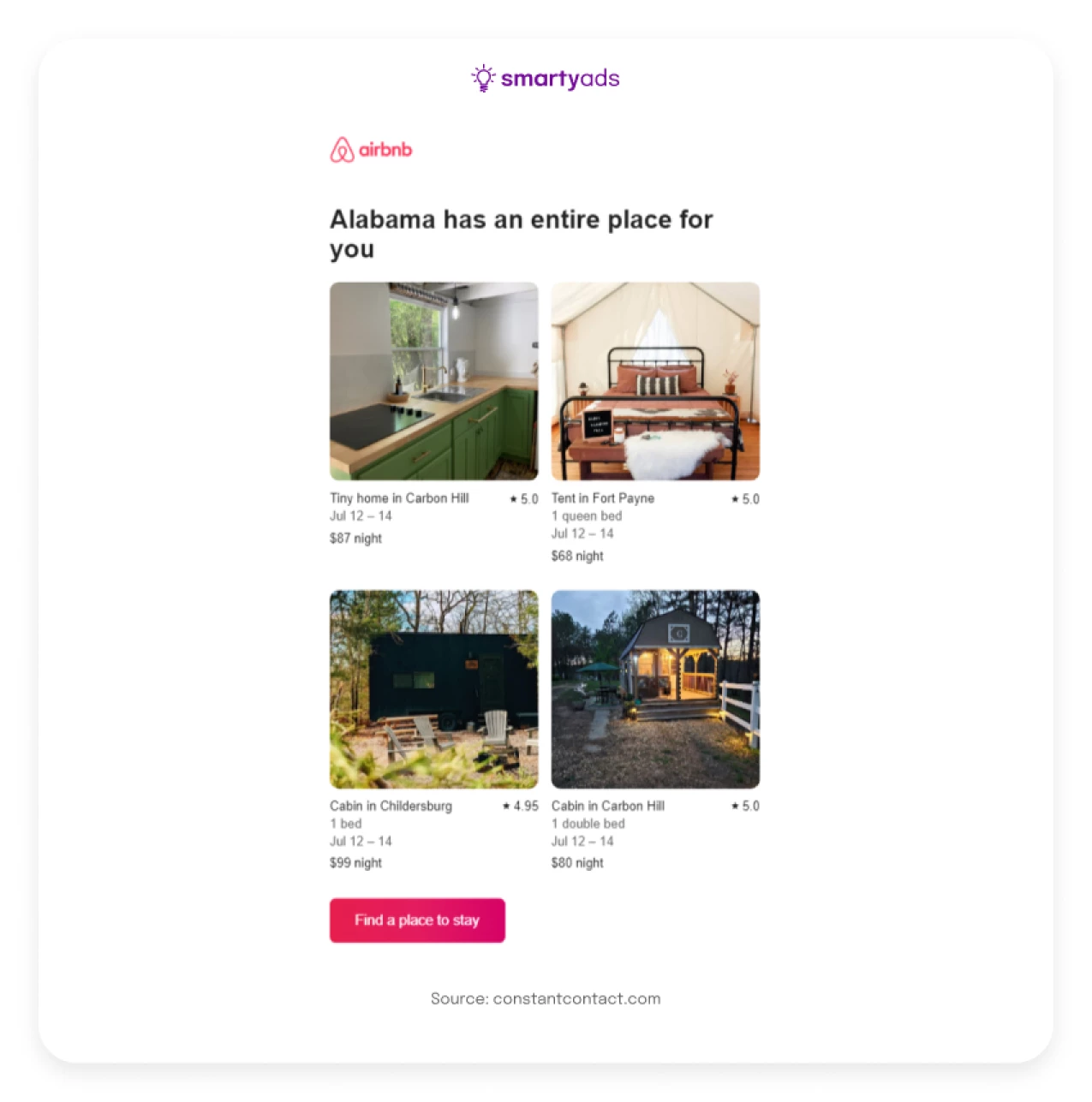
Why it worked: Personalization made the ads highly relevant, increasing the likelihood of conversion. People were reminded of their travel interests at the right moment.
Nike’s abandoned cart notifications
If a user added shoes to their cart but didn’t check out, Nike sent a push notification with an exclusive offer or a reminder that stock was low.
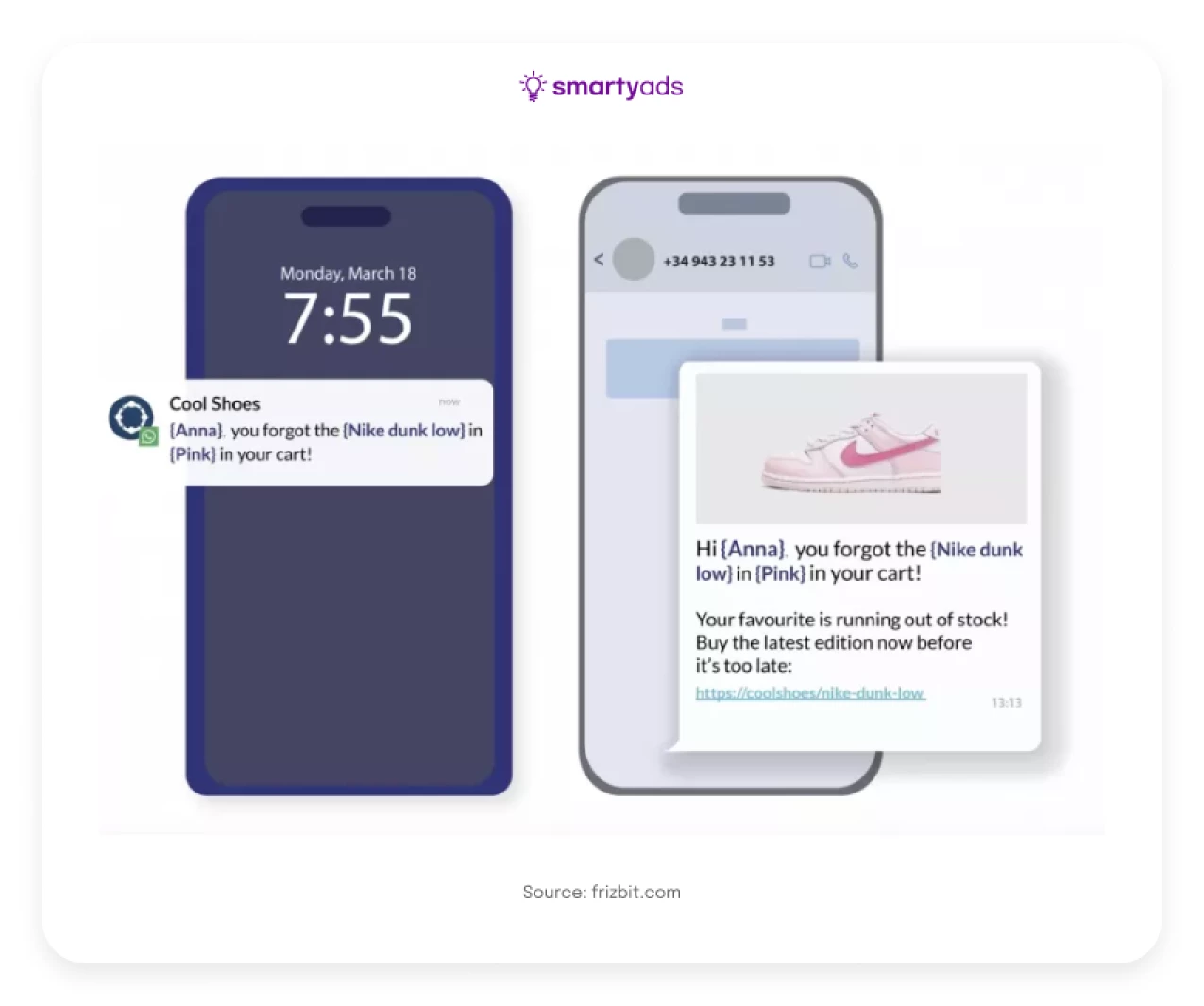
Why it worked: The combination of urgency (low stock) and incentive (discount) created FOMO (fear of missing out), pushing users to complete the purchase.
Duolingo’s streak reminder
Duolingo sends push notifications and emails reminding users about their streak. If someone misses a day, they get a message: "You're about to lose your 10-day streak! Come back now!" Sometimes, they even offer a "Streak Freeze" to retain engagement.
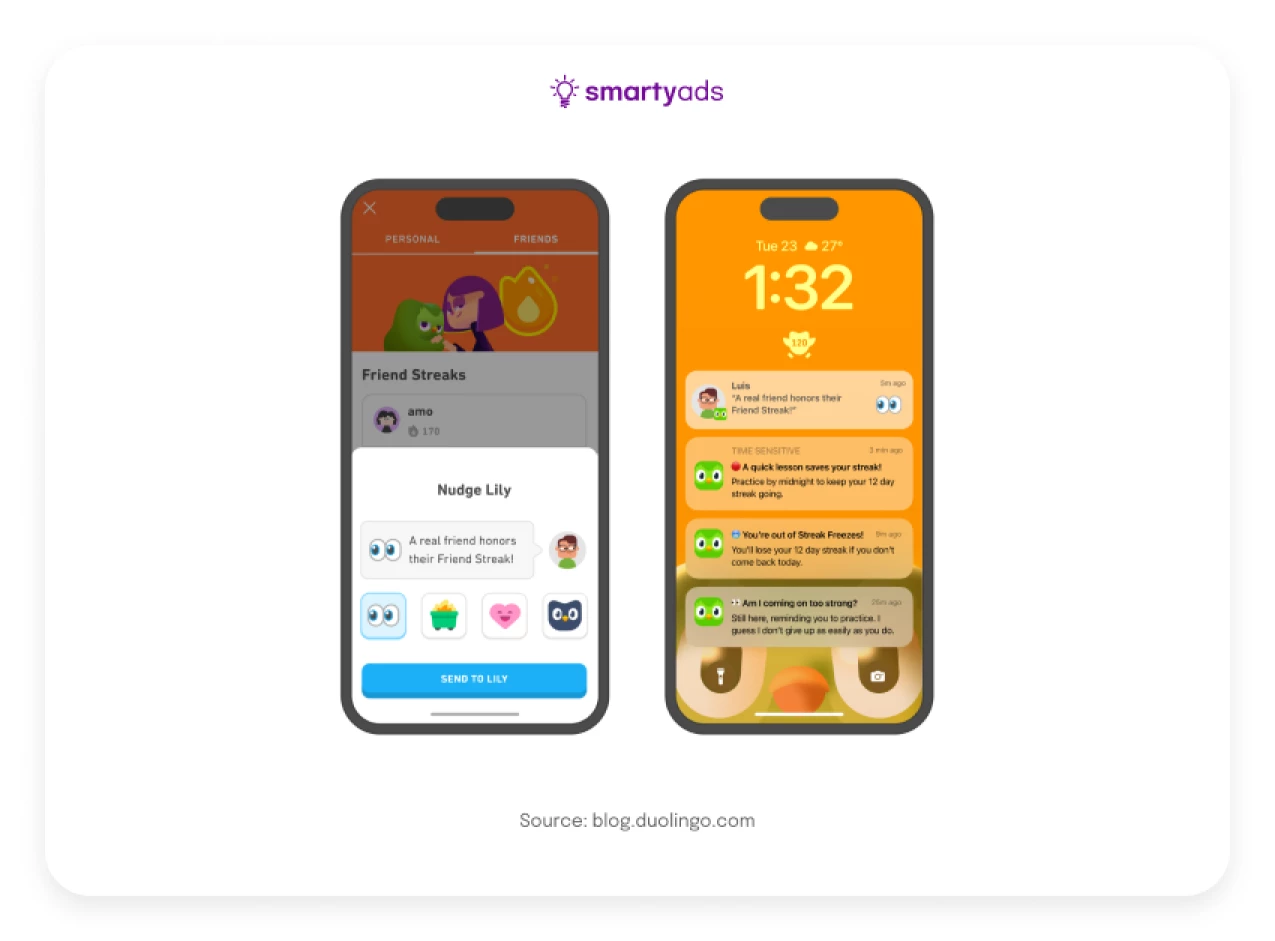
Why it worked: It taps into loss aversion—people hate losing progress. The streak system gamifies learning, and the reminder adds a psychological push to return to the app.
This campaign is a great example of how behavioral psychology (fear of loss + habit reinforcement) can drive engagement in mobile retargeting!
Uber’s incentivized referral
Uber sent promo codes to inactive users, encouraging them to take a ride. The offers were often time-sensitive, like "Get $5 off your next ride – valid for 48 hours!" In the same way, it also offered free rides to some categories of users.
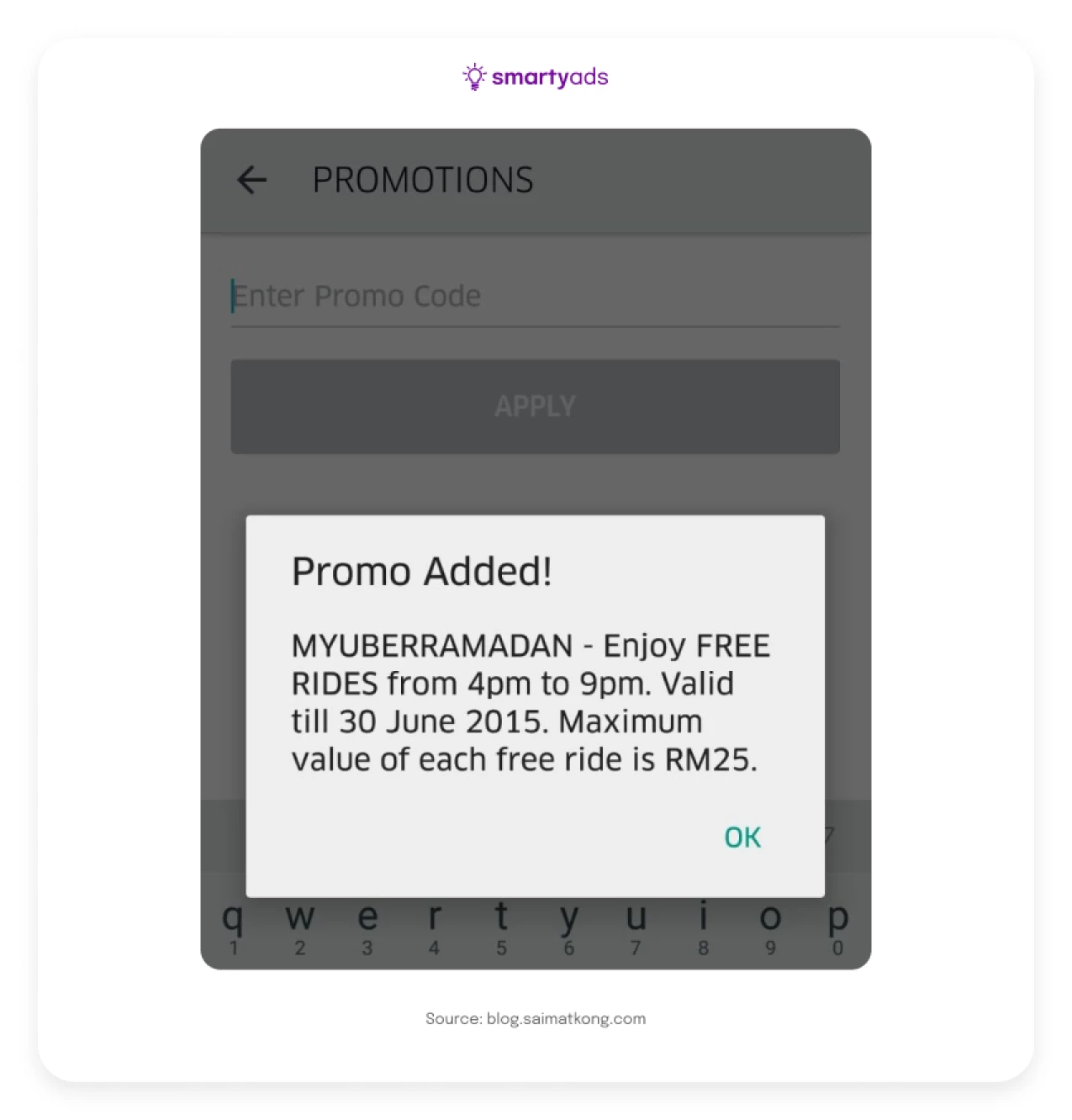
Why it worked: The time limit created urgency, and discounts reduced friction, making it easy for users to return to the platform.
The last word
During the last couple of years, we’ve witnessed a consistent rise in global users' time spent and engagement with mobile apps. This surge is even more pronounced in developing countries, where smartphone ownership has become nearly ubiquitous. This shift underscores the strategic advantage of targeting users in the mobile environment, where engagement is higher.
To stay ahead, marketers must continuously refine their retargeting strategies, leveraging data-driven insights and personalized messaging to re-engage users effectively. By doing so, you can maximize retention, boost conversions, and build long-term customer relationships in an increasingly mobile-first world.
Sign up at SmartyAds DSP and re-engage your customers in apps easily!

